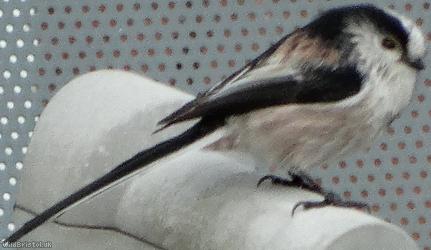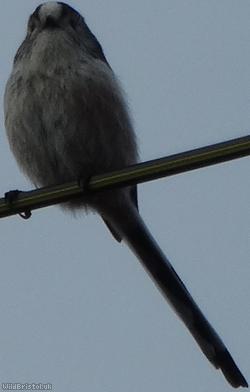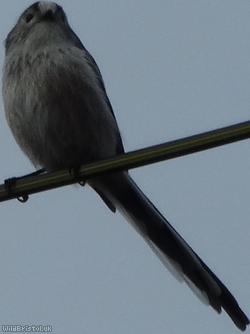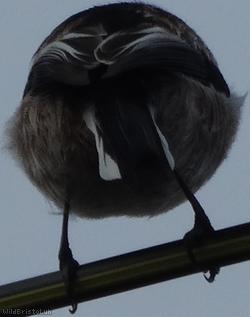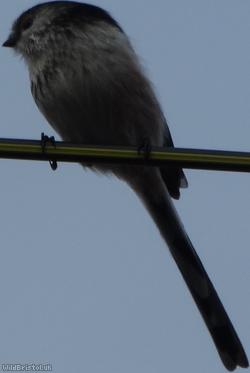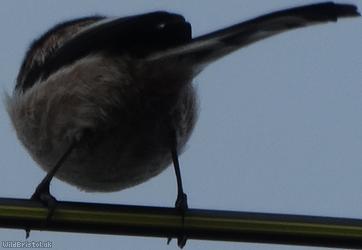Long-tailed Tit - Aegithalos caudatus
Favourite Photos
Species Description
- Diet
- Arthropods, e.g. centipede, millipede, woodlice, eggs, larva of moths/butterflies, vegetation matter in the Autumn
- Description
- one of Britain’s smallest birds weighing 7-9g (less than a fifty p coin). Despite its name it’s not actually a member of the tit mamilly. A tiny ball of fluff with a long narrow tail. Sexes similar, juvenile has a shorter tail and is much duller in colour and sootier.
- Habitat
- Mature scrub, woodland edges, glades, heaths, mature hedgerows, gardens, parks, allotments, cemeteries.
- Breeding
- Usually takes place between March-May. Builds ball-shaped nests, camouflaged with up to 3000 flakes of lichen and is lined with around 1500 small feathers. Breading pairs usually aided by helpers (sometimes previous years fledglings of the male or siblings)
- Population
- Fairly common resident (340,000 territories). Vulnerable to cold winters where numbers may fall, members of a flock huddle together to conserve heat.
- Predators
- Sparrowhawks, Corvids e.g. Jays, Crows
- Lifespan
- 2-3 years
- Size length
- 14cm (tail-60% of total length), wingspan 16-19cm
- Voice
- very vocal, flocks keep in contact with a thin penetrating, high-pitched see-see-see and a lower pitched mellower tup, gives a louder/harder slurred, rattling tsirrrup.
- Confusion species
- Pied wagtail (often on the ground), Long-tailed tits tend to stay high up in trees.
